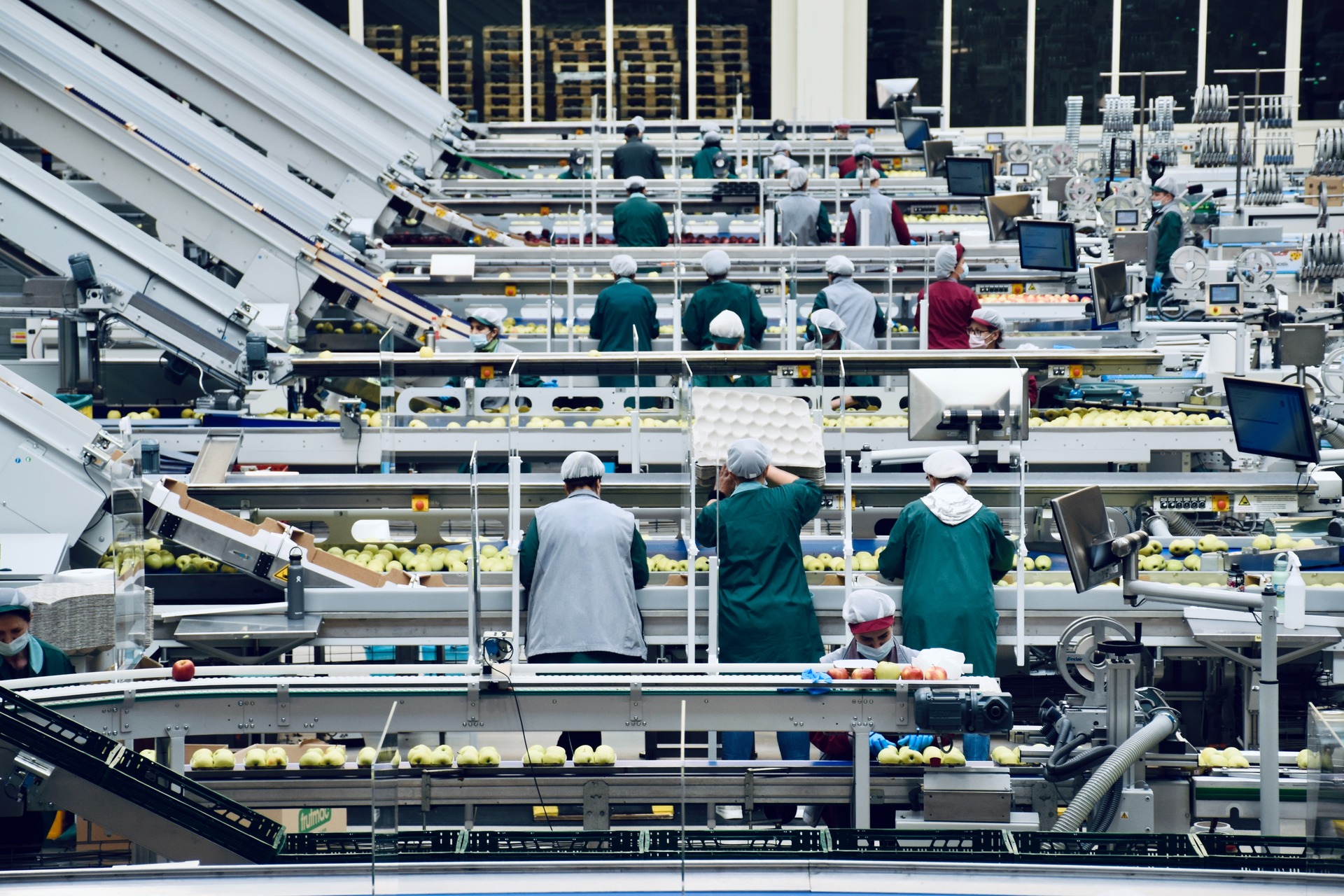
How Supply Chain Functions Drive Success in Manufacturing
November 17, 2023 - Emily Newton
Revolutionized is reader-supported. When you buy through links on our site, we may earn an affiliate commission. Learn more here.
The supply chain is the backbone of the manufacturing industry. The network moves raw materials into production facilities and finished goods to the consumer. In this process, various supply chain functions — like procurement and logistics — come into play.
In today’s global landscape, competition in manufacturing has intensified. Companies are competing on product quality, speed, efficiency and adaptability. Hence, understanding and optimizing supply chain functions have become crucial for success in this highly competitive environment.
What are Supply Chain Functions?
A supply chain is a system of organizations, activities and resources involved in moving a product from its supplier to its customer. The essential components include suppliers, manufacturers, distributors, retailers and customers. These interconnected entities ensure the smooth flow of goods from the initial stage of raw materials to the end customer.
Procurement deals with sourcing and purchasing raw materials. Logistics focuses on the transportation and delivery of goods. Inventory functions manage stock levels to meet consumer demand while minimizing holding costs. Each role is critical, and their effective management is essential for a successful supply chain in the manufacturing industry.
The Manufacturing Landscape
Manufacturing is a diverse industry responsible for converting raw materials into finished goods. It spans various sectors such as automotive, electronics, textiles and pharmaceuticals. The industry has experienced rapid technological advancements and global competition in recent years.
Within this context, supply chain functions gain particular importance. A well-organized supply chain can significantly enhance a manufacturing company’s ability to compete effectively. It ensures timely procurement of raw materials, efficient production planning and swift distribution.
These vital components contribute to reducing operational costs and improving product quality. Mastering supply chain functions is often the key to standing out and achieving long-term success in a competitive market.
Procurement: The Starting Point
It is the process of sourcing and acquiring the raw materials and services needed for manufacturing. Procurement involves identifying potential suppliers, negotiating contracts and overseeing timely deliveries. This function is the starting point for any manufacturing activity because production could stall without suitable materials at the right time.
In manufacturing, procurement directly affects the cost of goods produced, influencing profitability. The quality of raw materials also sets the standard for the finished product. Moreover, timely procurement ensures manufacturers meet production schedules, keeping the entire supply chain in sync.
Production Planning: The Blueprint
It involves mapping the entire manufacturing process, from acquiring raw materials to the final product. This function is essential for optimizing the use of resources, including labor, time and machinery. A robust production plan sets the stage for a streamlined and efficient manufacturing operation.
In the supply chain context, production planning aligns closely with other functions like procurement and inventory management. For instance, the procurement team needs to know the production schedule to ensure timely delivery of raw materials.
Similarly, inventory management relies on production planning to determine optimal stock levels. This interconnectedness underscores the importance of production planning that helps synchronize various supply chain functions.
Inventory Management: Stocking Smart
Managing inventory effectively is crucial for any manufacturing operation. It’s a balancing act between having enough stock to meet consumer demand and avoiding excessive inventory that incurs holding costs. Effective inventory management helps reduce waste, save money and improve cash flow.
Inventory management has a ripple effect on supply chain functions. Poor management can lead to stockouts or overstock situations, halting production. This misalignment can also affect other functions like logistics and distribution, causing delays and increased costs.
Thus, effective inventory management is integral to the success of the entire manufacturing operation. It ensures that production runs smoothly, goods reach the market on time and controls costs, contributing to a competitive edge in a crowded marketplace.
Logistics and Distribution: The Final Mile
It involves the planning and execution of transporting goods from the manufacturing facility to the end consumer. It covers a range of activities, including warehousing, transportation and distribution. Logistics ensures products reach their destination as efficiently and cost-effectively as possible.
In the broader context of the supply chain, logistics serves as the bridge between production and consumer satisfaction. Once a manufacturer creates a product, its journey to the consumer is equally crucial. Time and efficient logistics can significantly impact customer satisfaction, as delays or errors in this stage can tarnish a company’s reputation.
Logistics is pivotal in the manufacturing supply chain. It acts as the final touchpoint in delivering value to the consumer, making it critical to the overall success of any manufacturing enterprise.
Technology: The Game-Changer
Technology tools like the Internet of Things (IoT) and AI are revolutionizing supply chain functions in profound ways. IoT allows real-time tracking of goods and inventory levels, enabling more accurate and timely decision-making. AI, on the other hand, can analyze vast amounts of data to forecast demand, optimize routes and automate procurement processes.
In the manufacturing sector, these technological advancements are incredibly impactful. IoT devices can monitor the condition of machinery, predicting when maintenance is due and preventing costly breakdowns. AI algorithms can enhance production planning by analyzing historical data and predicting future needs, making the supply chain more responsive and agile.
These tools are not just optional add-ons but essential components for modernizing supply chain functions. They make manufacturing processes more efficient, cost-effective and adaptable to market changes, solidifying their importance in the competitive landscape.
Challenges and Solutions: Navigating Obstacles
Managing supply chain functions in manufacturing comes with challenges. One common issue is the need for real-time visibility into inventory and shipments, leading to inefficiencies and delays. Another challenge is coordinating various functions, such as procurement and production planning, to ensure a smooth flow of materials and information.
To overcome these challenges, adopting technology solutions can be a game-changer. Implementing an integrated supply chain management system can offer real-time insights into inventory levels, shipment statuses and production schedules. It enables quicker decision-making and better coordination among various departments.
Best practices also include regular training for staff to keep them updated on new technologies and methods. Collaboration with suppliers and distributors is crucial for optimizing the supply chain, and long-term partnerships can offer benefits like bulk discounts or priority shipping.
By implementing these practical solutions and best practices, manufacturers can mitigate challenges and ensure a more streamlined and effective supply chain.
Mastering Supply Chain Functions in Manufacturing
The supply chain is the lifeline of the manufacturing industry, connecting every step, from sourcing raw materials to delivering the final product to consumers. Mastering supply chain functions is not just an operational necessity but a strategic imperative for long-term success.
A well-managed supply chain can offer a competitive edge, enabling manufacturers to meet consumer demands quickly and cost-effectively. In a landscape with intense competition and rapid change, mastery of the supply chain is the key to enduring success in manufacturing.
Revolutionized is reader-supported. When you buy through links on our site, we may earn an affiliate commission. Learn more here.
Author
Emily Newton
Emily Newton is a technology and industrial journalist and the Editor in Chief of Revolutionized. She manages the sites publishing schedule, SEO optimization and content strategy. Emily enjoys writing and researching articles about how technology is changing every industry. When she isn't working, Emily enjoys playing video games or curling up with a good book.






